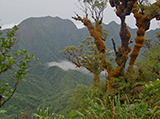FRONTLINE: ‘Cloud forest’, court battles and competing narratives: A Pacific research journalism case study
Abstract
This Frontline article documents and analyses the process of creating a piece of journalism about an Indigenous-run legal bid in the Solomon Islands to challenge potentially corrupt government logging approvals. It also documents the responses of 12 editors to whom the piece was presented to, including the reasons, in terms of standard newsworthiness criterion, that some of them gave for not running the article. This process illustrates how the criteria exclude coverage of some international issues. According to lawyers working on it, this case could set important legal precedents that change the way companies deal with both the government and traditional land owners in the Solomon Islands. Spreading its relevance to other places, the story, when told at length, differs from and therefore challenges stereotypical narratives about Pacific
Islanders. In doing so, it contributes to a process called ‘social bridging’ described by Ward (2010) as being an aim of ethical journalistic practice. The writing and publication process are analysed with reference to Foucault’s (1972) model of discourse and enunciative modalities.
Pictured: Figure 1: ‘Cloud forest’: Mt Rano from the crater rim near Mt Veve on Kolombangara Island. Image: Andrew Cox/Pacific Scoop
Downloads
Metrics

Copyright (c) 2015 Kayt Davies

This work is licensed under a Creative Commons Attribution-NonCommercial 4.0 International License.















